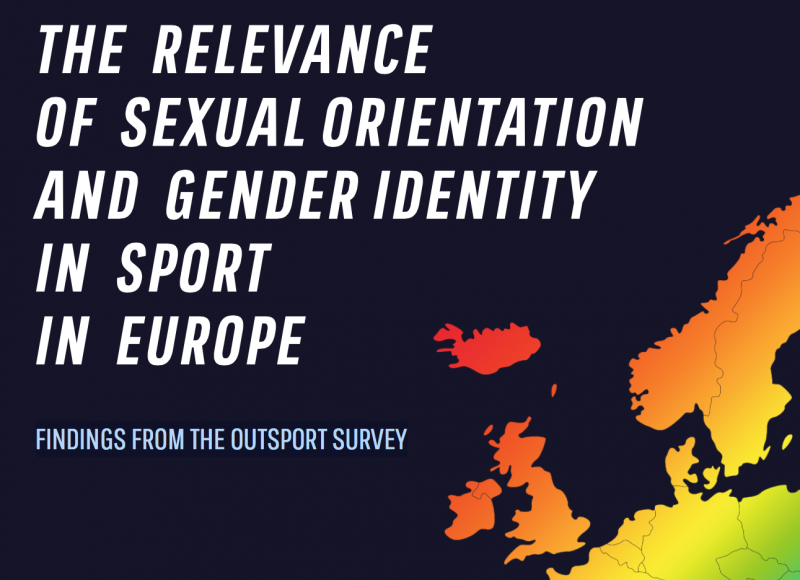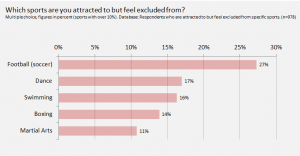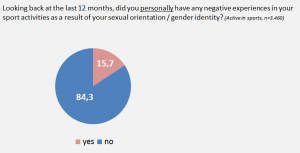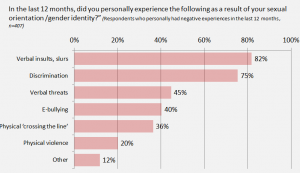Homophobia and Transphobia in Sport – Results of the first EU-wide survey

Homophobia and Transphobia in Sport – Results of the first EU-wide survey based on direct experiences of LGBTI people published today
More than 5,500 lesbian, gay, bisexual, transgender and intersex (LGBTI) people from all 28 EU countries completed the online survey created by the Institute of Sociology and Gender Studies of the German Sport University Cologne within the framework of the Erasmus + Outsport project. The age of the participants is between 16 and 78 years and 27 years on average.
The complete report – which can now be accessed on our website, out-sport.eu – contains the aggregated data results at EU level and highlights the differences with regard to sexual orientation and gender identity and between the five project countries Italy, Germany, Scotland, Hungary and Austria, offering a rich and wide perspective of anti-LGBTI attitudes in sport and in different sport disciplines and environments, as lived and perceived by LGBTI people.
“We are proud of this work and we are sure that the results are fundamental for policies to combat anti-LGBTI attitudes in sport both at European and national level” says Rosario Coco, Outsport coordinator.
Some of the key results of the study are:
-
Almost 90% consider homophobia and particularly transphobia in sport a current problem.
-
20% refrain from participating in a sport of interest due to their sexual orientation and/or gender identity. This is most frequently the case for trans people (54%) and refers predominantly to football/soccer, dancing, swimming, and boxing.

-
One third of respondents who are active in sports have not reveled their sexual orientation or gender identity respectively to anybody in the sporting environment. This percentage is higher in Italy (41%) and Hungary (45%).
-
16% of respondents who are currently active in any sports have had at least one negative personal experience in the last 12 months that was related to their sexual orientation or gender identity. The share is higher among trans people – especially among trans women (46%).

-
Of those with negative experiences, verbal insults (82%) and structural discrimination (i.e. unequal opportunities) (75%) are the most common forms of homo-/transphobic incidents that were indicated. Verbal threats (44%), e-bullying (40%), physically “crossing the line” (i.e. being shoved and/or pushed) (36%) and physical violence (20%) are also common experiences.

-
More than a third of respondents do not know an organisation or individual to contact in instances of being discriminated against in a sports context.
-
The three actions that are most often supposed by respondents to be helpful to tackle homo-/transphobic discrimination in the field of sport: (a) famous sports stars coming out, (b) high profile anti-homophobia/transphobia campaigns and (c) diversity trainings.
Based on these survey findings, umbrella sport organisations and sport federations are currently being interviewed about their strategies in tackling homo-/transphobic discrimination in the field of sport. The results of this substudy will be published on the 8th of November 2019 at the final Outsport Conference in Budapest.
Press Office
Andrea Maccarrone
andymaccarrone@gmail.com
+39 3497355715